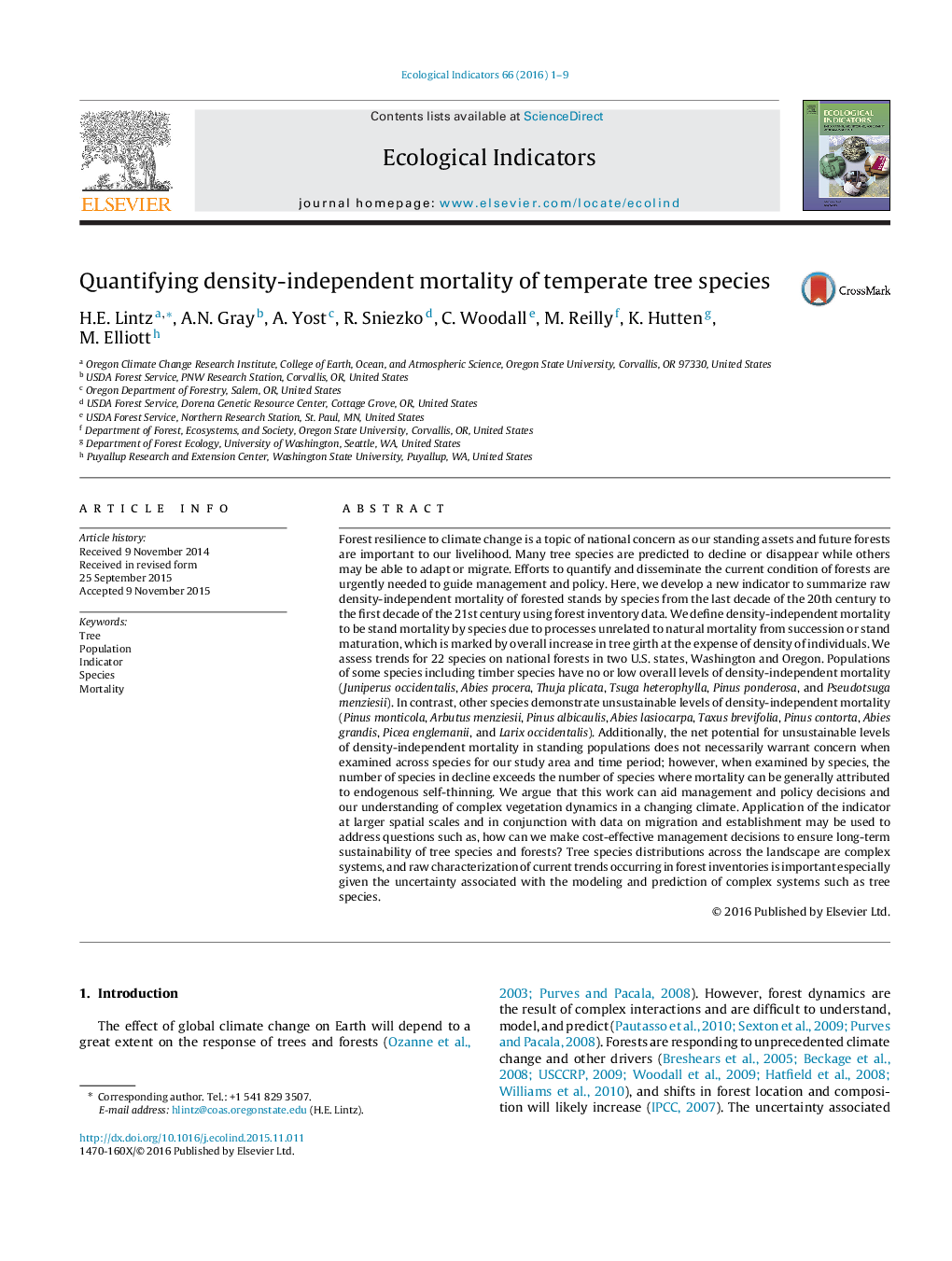| Article ID | Journal | Published Year | Pages | File Type |
|---|---|---|---|---|
| 6293401 | Ecological Indicators | 2016 | 9 Pages |
Abstract
Forest resilience to climate change is a topic of national concern as our standing assets and future forests are important to our livelihood. Many tree species are predicted to decline or disappear while others may be able to adapt or migrate. Efforts to quantify and disseminate the current condition of forests are urgently needed to guide management and policy. Here, we develop a new indicator to summarize raw density-independent mortality of forested stands by species from the last decade of the 20th century to the first decade of the 21st century using forest inventory data. We define density-independent mortality to be stand mortality by species due to processes unrelated to natural mortality from succession or stand maturation, which is marked by overall increase in tree girth at the expense of density of individuals. We assess trends for 22 species on national forests in two U.S. states, Washington and Oregon. Populations of some species including timber species have no or low overall levels of density-independent mortality (Juniperus occidentalis, Abies procera, Thuja plicata, Tsuga heterophylla, Pinus ponderosa, and Pseudotsuga menziesii). In contrast, other species demonstrate unsustainable levels of density-independent mortality (Pinus monticola, Arbutus menziesii, Pinus albicaulis, Abies lasiocarpa, Taxus brevifolia, Pinus contorta, Abies grandis, Picea englemanii, and Larix occidentalis). Additionally, the net potential for unsustainable levels of density-independent mortality in standing populations does not necessarily warrant concern when examined across species for our study area and time period; however, when examined by species, the number of species in decline exceeds the number of species where mortality can be generally attributed to endogenous self-thinning. We argue that this work can aid management and policy decisions and our understanding of complex vegetation dynamics in a changing climate. Application of the indicator at larger spatial scales and in conjunction with data on migration and establishment may be used to address questions such as, how can we make cost-effective management decisions to ensure long-term sustainability of tree species and forests? Tree species distributions across the landscape are complex systems, and raw characterization of current trends occurring in forest inventories is important especially given the uncertainty associated with the modeling and prediction of complex systems such as tree species.
Related Topics
Life Sciences
Agricultural and Biological Sciences
Ecology, Evolution, Behavior and Systematics
Authors
H.E. Lintz, A.N. Gray, A. Yost, R. Sniezko, C. Woodall, M. Reilly, K. Hutten, M. Elliott,
